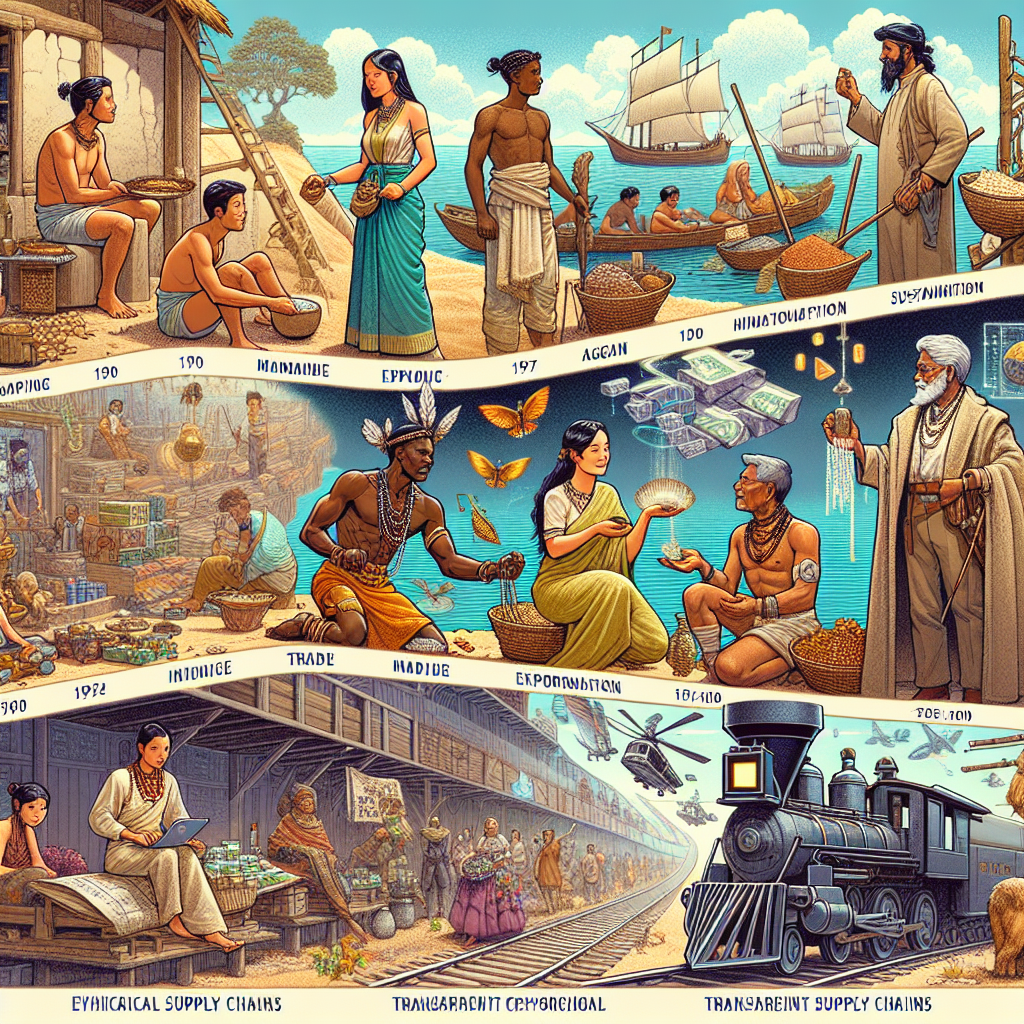From Spice Routes to Digital Markets: How Trade Shaped Our World and What’s Next!

Trade has been the backbone of human civilization, pulsating with the rhythm of economic exchanges that shaped societies, cultures, and even political landscapes. As we traverse from ancient spice routes to today’s digital marketplaces, the evolution of trade reveals much about our shared humanity and future aspirations.
The Dawn of Trade: Ancient Economies and Barter Systems
In ancient times, trade didn’t involve cash or credit; rather, it revolved around barter systems. Communities exchanged goods based on mutual needs—cattle for grain, clay pots for textiles. The Sumerians and Egyptians established early trade routes, paving the way for the Silk Road, which connected the East and West. These interactions helped spread not just goods but also ideas, cultures, and even religions, making trade a crucial link in civilization's development.
The Age of Exploration: Expanding Horizons
The Age of Exploration in the 15th and 16th centuries marked a significant turning point. Explorers like Columbus and Vasco da Gama sought new trade routes, leading to the exchange of exotic spices, gold, and silver between continents. This period not only expanded economic opportunities but also brought about the unfortunate exploitation of indigenous peoples and resources. The consequences of this historical trade network still reverberate today, highlighting the complex legacy of globalization.
Industrial Revolution: The Birth of Capitalism
The Industrial Revolution in the 18th century revolutionized trade yet again. It introduced mass production, improved transportation (think steam engines and railroads), and a burgeoning capitalist economy. Factories needed raw materials, and suddenly, trade wasn’t just about what individuals could barter but what nations could exchange on an unprecedented scale. This shift led to modern economic systems and the creation of stock markets, fundamentally changing how we perceive value.
Digital Era: Trade in the 21st Century
Fast forward to the 21st century, the landscape of trade has transformed dramatically with the rise of the internet. E-commerce giants such as Amazon and Alibaba have introduced a platform where consumers can buy virtually anything with a click. The emergence of cryptocurrencies and blockchain technology offers new avenues for secure and decentralized exchanges, ensuring potency in trade that was previously unimaginable.
The Future of Trade: Sustainability and Ethical Practices
What does the future hold? As we face challenges such as climate change and social inequality, there’s a growing movement toward sustainable and ethical trade practices. This means consumers are becoming more conscious about the origins of their products and the implications of their purchases. Transparency in supply chains and an emphasis on fair trade are not just trends but necessities. Will companies adapt or be left behind? This is the question echoing in boardrooms and marketplaces alike.
Conclusion: Trade as a Reflection of Humanity
From humble barter systems to intricate global networks, trade illustrates human innovation, resilience, and adaptability. As we navigate the challenges of the digital age and beyond, understanding our trading history offers insight into future opportunities. The question remains: how will we shape the next chapter of this ongoing story?